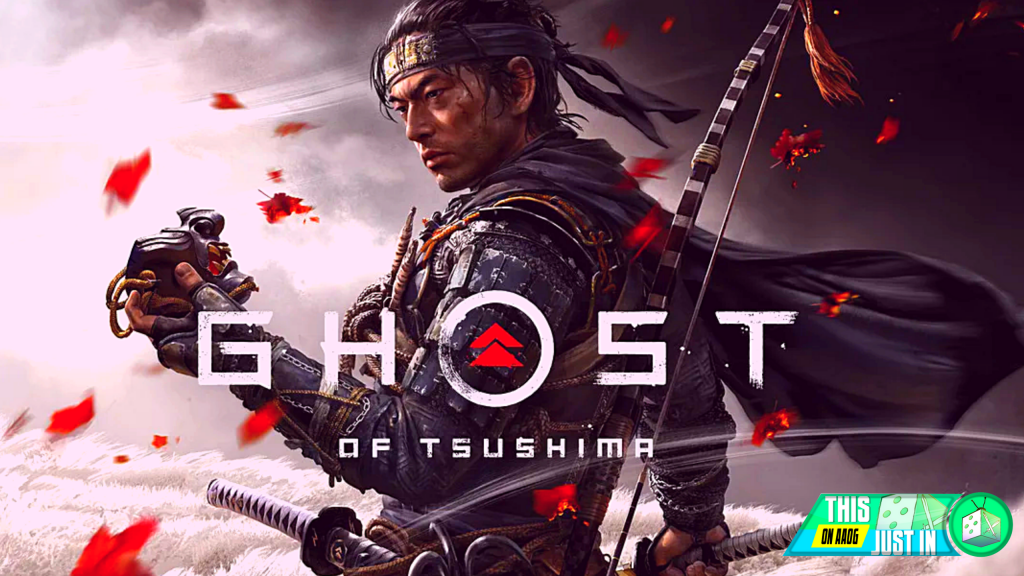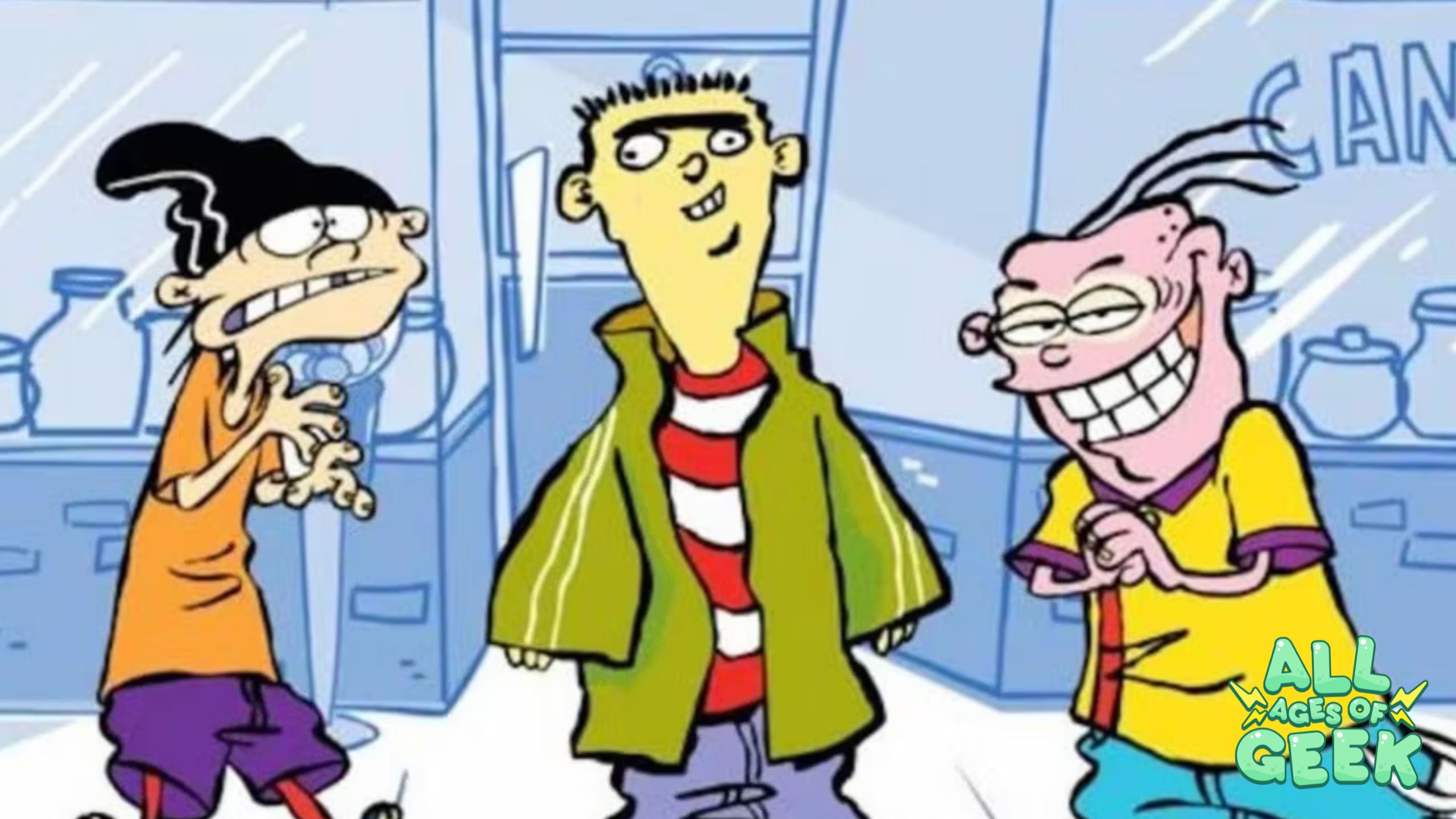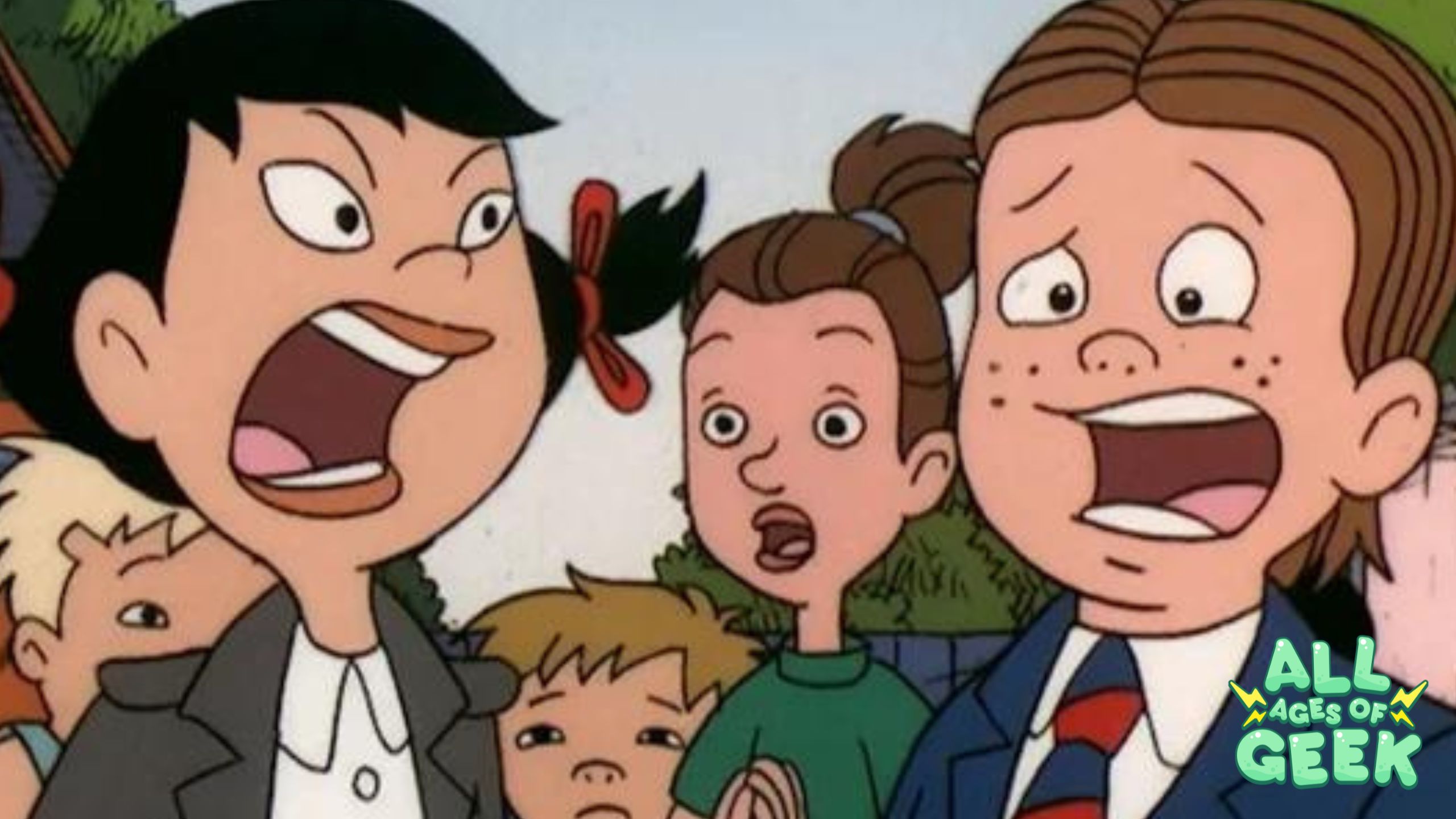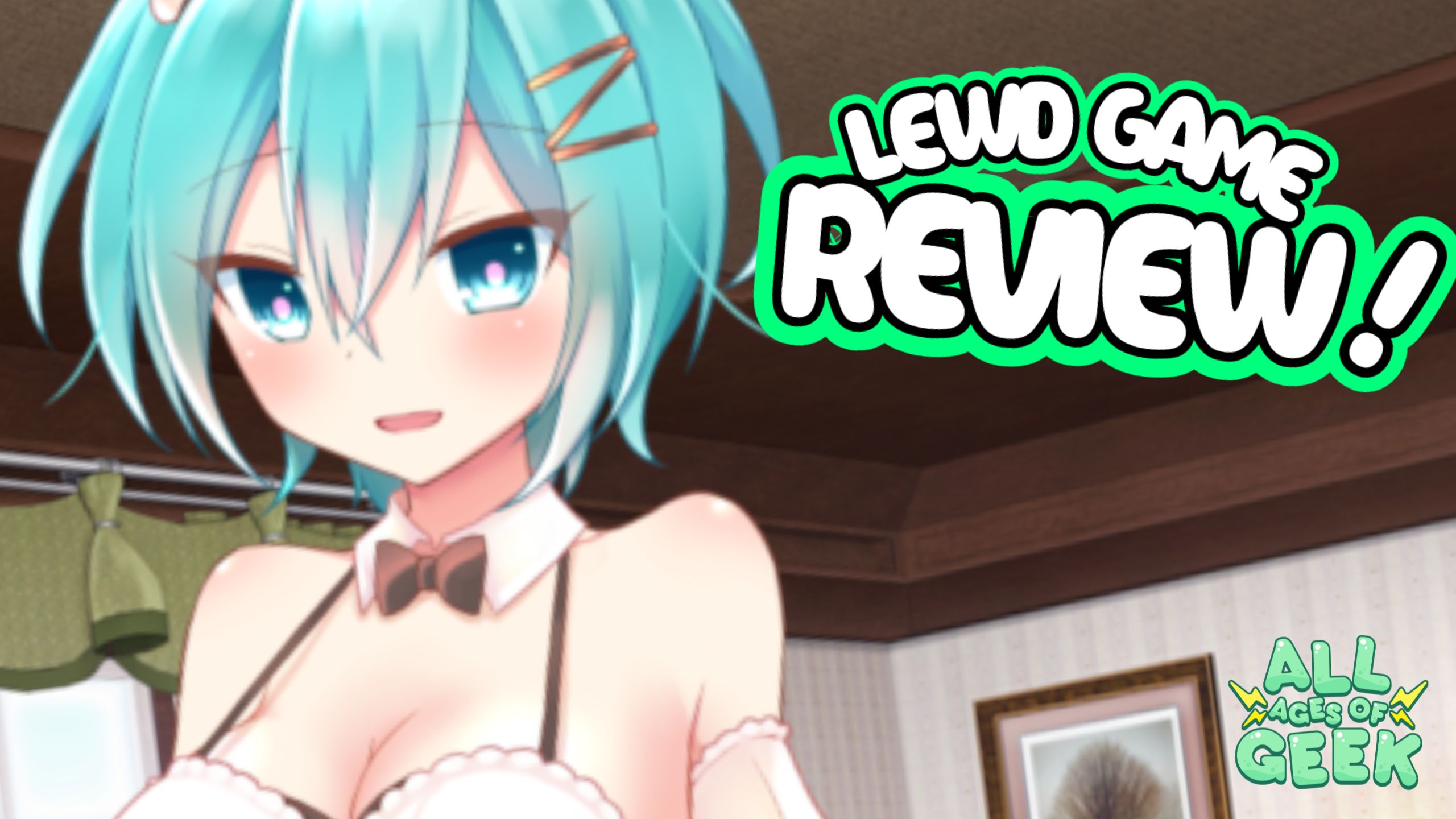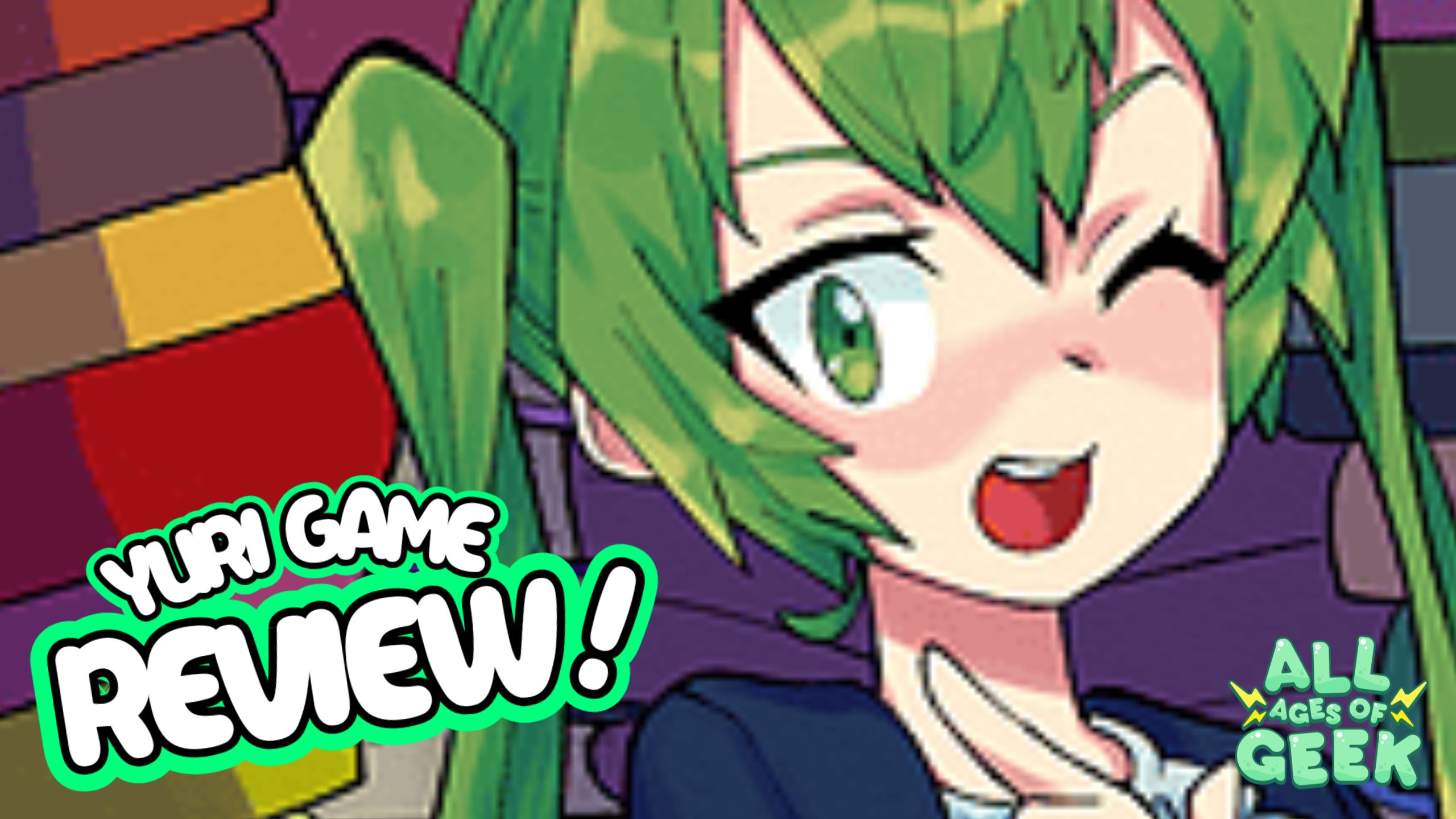It’s been an interesting year for video games, to say the least. No one expected that we would be spending three whole months indoors while this pandemic tore through the world. One thing is for sure, video games proved to be one of the many things that kept everyone from going mad.
There were three games I was highly anticipating: The Last of Us Part 2, Resident Evil 3 Remake, and Final Fantasy VII Remake. Resident Evil 3 was a fun horror-action game that I got addicted playing for a whole three weeks. Even after S-ranking the game on all difficulties, I still found satisfaction in beating the game over and over again. However, despite the fun factor, Resident Evil 3 Remake didn’t really entice me as a gamer and a big fan of the franchise. (They did Nemesis dirty in this game, man…)
The Last of Us Part 2 came out, and was probably my most anticipated game of the year. And though, I enjoyed playing the game, I couldn’t help but feel that it left much to be desired. It was an error on my end, because I’ve set my expectations way too high for the game. When it didn’t live up to the hype, I couldn’t help but feel a bit disappointed.
Check out my LAST OF US PART 2 Review here
Which leaves Final Fantasy VII Remake. I actually have not played it yet. Why? It’s a long-winded story about stubbornness, Amazon Prime mishaps, and my desire for an artbook, that turned out to be a big letdown. But we’ll get to that story some other day.
So out of the three games, I’ve played two. Out of the two, none really wowed me to Batman: Arkham levels of hype. Then from out of nowhere, Sucker Punch reminded me, that they had a game coming out this year also.
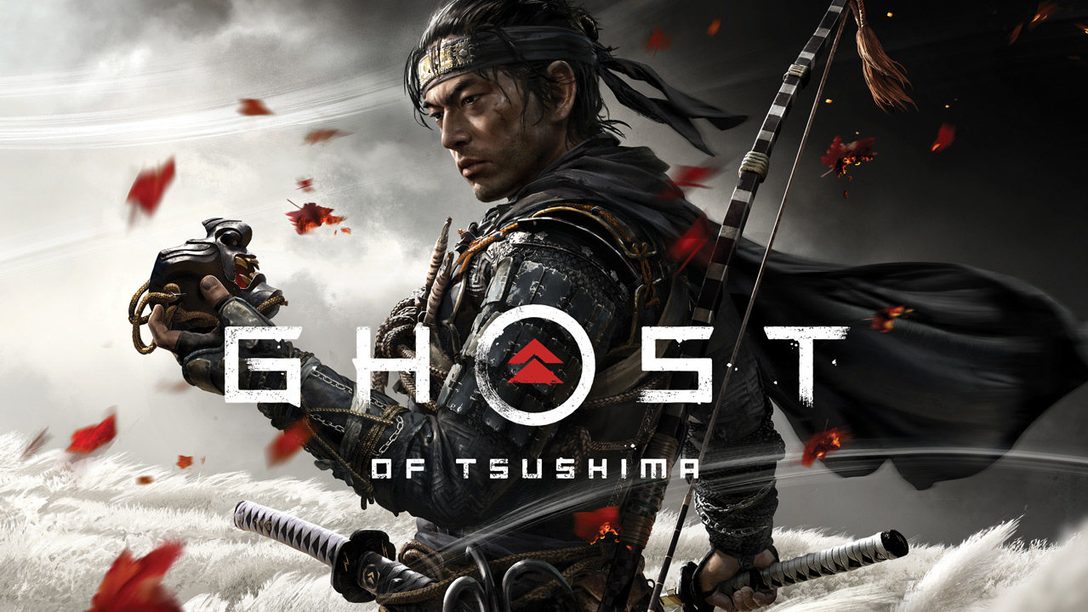
Ghost of Tsushima is an open-world samurai action, adventure game developed by Sucker Punch, the same studio responsible for the action-packed superhero game, Infamous, on the PS3. Honestly, I forgot that this game was coming out this year. I thought it was delayed for another year due to the quarantine. But my brother reminded me that it existed and he offered to go half on buying the game when it came out. So, we agreed, and while he was killing Mongul invaders in the living room, I was killing Clickers in my room. Though the game looked promising, and I have love for the samurai genre in general, I was a bit skeptical on starting the game because it was a brand-new IP. And considering the last game I played from Sucker Punch was the lackluster Infamous: Second Son, I didn’t really have any expectations for this game.
I have not beaten the game in its entirety yet, but my God… I think this is going to win Game of the Year.
GAMEPLAY
This game probably has the best swordplay combat in any game I’ve played in a while. This game is not an over the top hack-and-slash along the lines of say, Devil May Cry or God of War, where every attack was super flashy and over-the-top. It could easily have gone in that direction. Unlike its contemporaries, Tsushima’s combat is reserved and refined, often favoring precise attacks over broad strikes, which fits its samurai aesthetic. The game doesn’t shy away from flashy moves, despite its more reserved gameplay. In fact, you are given four different stances to unlock, each with its own purpose:
-Stone Stance: effective against Swordsmen
-Water Stance: effective against Shielded Enemies
-Wind Stance: effective against Spears
-Moon Stance: effective against all Brutes, with either Swords, Shields, or Spears.

You have three categories as shown on this image.
That’s crazy!
The cool thing about these stances is that you can switch between them mid-combat, like Dante’s style-switching from Devil May Cry. This allows the player to be creative with their combos and adapt to multiple enemies at any given time. Luckily, there is a dodge button, that helps the player get out of tight spaces and reposition themselves in an advantageous position; and also, a block button, which blocks enemy attacks. Enemies also have unblockable attacks which keeps the player on their toes, enforcing the idea that blocking can only get you so far. You have to fight strategically rather than hacking away mindlessly. Later on, you unlock the ability to Perfect Parry attacks which is the most satisfying thing when you execute it, even more so when you do it against boss characters. My brother asked me why I don’t just stealth kill enemies, and simply put, it’s cause of this perfect parry move. It is Jin Sakai’s version of Dante’s Royalguard Style.
Boss fights are a blast because you are forced to adapt to certain enemy attacks in quick succession. I found that switching stances during boss fights help even out the odds because each style had its unique advantages such as range and speed. If you love samurai films, you’d probably find comparisons from the duel in Harakiri.
One of the many reasons I love the combat in Tsushima is how akin it feels to fighting games. You can’t just go in and mashing buttons. I mean, you can. No one will stop you. But the sheer satisfaction of executing precise attacks and taking down enemies without taking a single hit is satisfying beyond belief. It makes you feel like a true swordsman.

I mentioned that you can stealth kill enemies in this game. Stealth is an option in this game, very much like in Uncharted, and The Last of Us, but what I like about the stealth combat in this game in particular is how it is connected to Jin’s code as a samurai. There are two ways to approach a group of enemies. The first is the Standoff—Jin challenges the enemy group’s strongest warrior (or whoever is the closest enemy) to fight a one on one battle. Jin waits for the enemy to attack before delivering one quick killing stroke. One strike, one kill. Then combat against the rest commences. It’s a straight up homage to Sanjuro and I love it. The second approach is the “Assassination” technique. It’s a skill that you unlock which allows you to stealth kill an enemy. Jin learns it from Yuna, who tells him that he needs to bend his moral code of facing your enemy head on, to prevent countless lives from being killed. In fact, in one mission, Jin gets a flashback of his uncle teaching him the ways of the samurai and how attacking someone from behind is against that code, after stealth killing an enemy. Both methods have their advantages, but stealth killing is the only method that questions you whether or not you are still a samurai.
STORY
Ghost of Tsushima follows the story of Jin Sakai, a samurai under the mentorship of his uncle, Lord Shimura. After fighting a losing battle against invading Mongol forces, Lord Shimura is taken prisoner, and Jin Sakai is left for dead. After being nursed back to health by a thief, named Yuna, Jin embarks on a journey to rescue his uncle. However, his honor as a samurai is challenged when he is forced to adapt and bend his honorable code to fight this new breed of enemy.

The entire first act revolves around you gathering allies to storm the Mongol stronghold stationed at Castle Kaneda. You accomplish this by going on these side quests with their own contained story arcs. For example, you recruit Lady Masako by helping her look for her family’s killers. As the story progress, you realize that Mongols were not entirely responsible for their deaths, but traitors from Tsushima itself. One of the constant themes of the overall story is betrayal, whether it be a betrayal of trust, or betrayal of one’s belief or code.
What really helps the main story are the various random encounters with bandits and Mongols as you journey around the map. It is an open-world game and you can choose to get through the main story, or take your time exploring a majority of the first island helping those in need and discovering secret shrines and locations that help upgrade Jin’s arsenal, strength, and combat skill. As with any other open world game, I opted to go the slow route and discover as much as I can before progressing the story. A neat mechanic in the game is that your “legend” increases the more you accomplish side quests, and help random hostages you encounter on the main roads. This gives you skill points that you can use to unlock new moves and skills for Jin.
This game is obsessed with legends and tales, and has a great appreciation and respect for Japanese folklore. A good number of side-quests revolve around finding bards who tell stories about great warriors of the past and the mission would then be about looking for a legendary bow that can take on an army; a teacher who knows the legendary art of the sword; there’s so much to do and learn about this small Japanese island.
There are locations that also progress character growth and share insight on Jin’s thoughts. For example, finding a hot spring would not only increase your health, but it will allow the player an option to “reflect on” certain topics such as his uncle’s teachings, philosophy, people he’s met, etc. There are hidden spots where you can compose haikus about grief, compassion, war. These brief moments of “ma” (a Japanese term for “emptiness” or “negative space”) become small windows to Jin’s character.
The story is Jin Sakai and his journey to self discovery. The game takes its time to build, like the many duels Sakai has been a part of.
KUROSAWA MODE
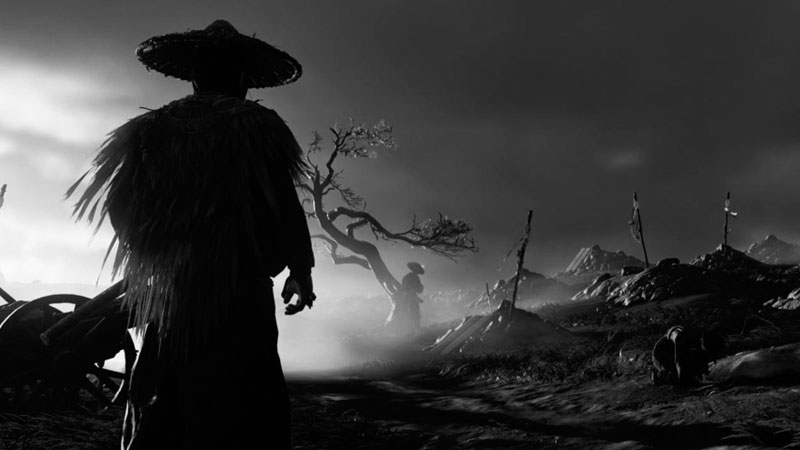
There is one more thing I want to talk about.
It’s the Kurosawa Mode.
Named after the legendary Japanese filmmaker Akira Kurosawa, this special mode turns the game into a Kurosawa film. It is only fitting as you can definitely see the director’s influence on this game. Though Kurosawa was more than capable of creating surreal and expressionist images with color, it’s in black and white where he truly shines.
The game looks stunning. The vibrant colors create a nice contrast to the darkness that has befallen Tsushima in the form of a Mongol invasion, There has been real care put into developing the wind and how it affects the landscape. The lighting provides a serene atmosphere that feels like you’re living in a fantasy and mythic world.
Kurosawa Mode takes away all the color. It turns everything black and white. Film grains also give the illusion that you are watching an old film reel. It is nostalgic, to say the least. I found great joy in how faithful this mode is to Kurosawa’s films. I mentioned how the wind mechanics were particularly well crafted, and that’s because Kurosawa was a master at capturing smoke and wind in his films. The way that fog sluice across the screen doing slow and quiet moments in the game provide an air of mystery, and during stand-offs, creates another layer of tension.

I think this is the mode that made me fall in love with this game. The first thing I did was turn this on, put the language in Japanese, and turned the difficulty to “Hard mode” (it was the hardest difficulty available when I started, they have since added “Lethal” mode). The Photo Mode provide you with tools to create Kurosawa-esque compositions and short tracking shots. It gives you options on how much smoke, fireflies, leaves– every particle you can think of– to use, and how they moved across the scene. Kurosawa would be tickled.
The only downside to Kurosawa mode is that it makes gameplay difficult even on normal difficulties, because a lot of combat uses color indicators to counter enemy attacks. There are side quests that rely on you to find specifically colored flowers. I would not recommend Kurosawa mode on hard difficulty unless you want a true samurai experience. Another small thing that bothered me about Kurosawa mode is how the characters’ mouths were not in sync with the Japanese voice actors. It seems that the character models are locked onto the English settings and the Japanese voice lines were dubbed over. It’s a bit of a pet peeve at times, but if you’ve watched old Asian films with bad English dub, I think you’ll get used to it quickly. (Sub v. Dub I guess…)

*Neigh*
Well, it doesn’t belong to me…
All in all, I think that this game is turning out to be my personal pick for Game of the Year. But, I still have much to do before I can say that with confidence. Act One ended with a big twist that I didn’t really see coming and looking back at it, it should have been obvious.
I have a feeling that this game will be the new golden standard when it comes to samurai games.


